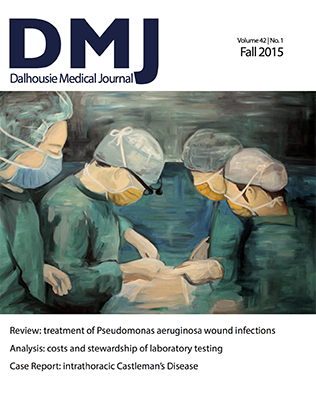Pseudomonas aeruginosa wound infections: a critical appraisal of topical antiseptics
DOI:
https://doi.org/10.15273/dmj.Vol42No1.6434Abstract
Background: Pseudomonas aeruginosa infection is a serious complication of burns and wounds with a high degree of morbidity and mortality. This paper reviews the literature on the use of topical antiseptics for the treatment of P. aeruginosa wound infections.
Methods: Embase and PubMed were searched, yielding 119 results that were reviewed. Inclusion criteria were all papers that assessed patients with confirmed P. aeruginosa wound infection treated with topical antiseptics and reported the eradication of the pathogen.
Results: Three papers met the inclusion criteria, with a total sample size of 33. All of the studies analyzed acetic acid for the treatment of P. aeruginosa wound infection. The pooled data demonstrated that 84.8% of confirmed P. aeruginosa wound infections were effectively treated with acetic acid.
Conclusions: P. aeruginosa remains a serious infection complicating burn and wound healing. Treatment commonly includes topical antiseptics; however, there is a paucity of clinical based trials to support this. Three small trials demonstrated some evidence for the use of acetic acid as a topical treatment. More evidence is required to demonstrate the efficacy of topical antiseptics as well as recommend specific types of topical treatment for this pathogen.
Downloads
Published
How to Cite
Issue
Section
License
Authors who publish with this journal agree to the following terms:
- Authors retain copyright and grant the journal right of first publication with the work simultaneously licensed under a Creative Commons Attribution License that allows others to share the work with an acknowledgement of the work's authorship and initial publication in this journal.
- Authors are able to enter into separate, additional contractual arrangements for the non-exclusive distribution of the journal's published version of the work (e.g., post it to an institutional repository or publish it in a book), with an acknowledgement of its initial publication in this journal.
- Authors are permitted and encouraged to post their work online (e.g., in institutional repositories or on their website) prior to and during the submission process, as it can lead to productive exchanges, as well as earlier and greater citation of published work (See The Effect of Open Access).


